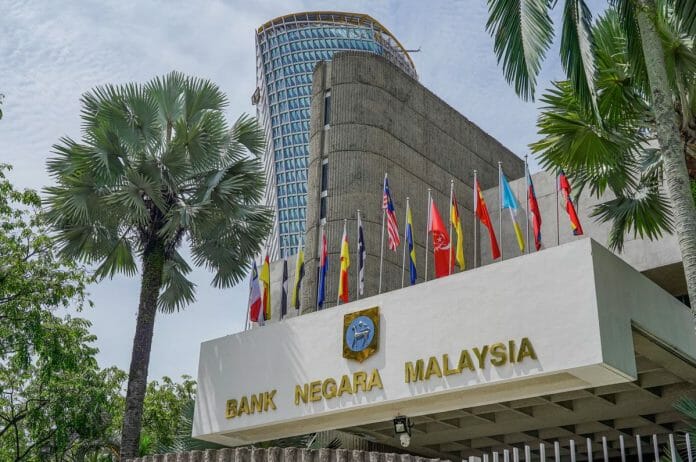Bank Negara Malaysia’s international reserves declined for the third consecutive month, falling by USD1.6b or -1.5% MoM to a one-year low of USD108.5b as of 31 October 2023. Sufficient to finance 5.1 months of imports of goods and services (previously retained imports: 7.0 months) and is 1.0 time total short-term external debt.
The decline Kenanga says was mainly attributable to a continued drop in foreign currency reserves. Foreign currency reserves (-USD1.6b or -1.6% MoM to USD96.5b): shrank to their lowest level since October 2022 due to continued central bank interventions, a fall in the conversion value of other foreign currencies into USD, reduced export receipts and possible rise in portfolio capital outflows. Notably, the BNM’s net FX reserves fell to an 11-month low USD56.7b in September (Aug: USD59.8b) as the short position in FX swaps widened to USD24.1b (Aug: USD22.9b).
IMF reserve position (-USD0.1b or -6.2% MoM to USD1.3b): declined at the fastest pace since March 2015. Meanwhile, special drawing rights, other reserve assets, and gold reserve were relatively unchanged. In ringgit terms, the value of BNM reserves declined further by RM7.8b or -1.5% MoM to RM509.4b. USDMYR monthly average (4.75; Sep: 4.68): despite Malaysia’s robust macroeconomic fundamentals and China’s better-than-expected GDP performance, the ringgit depreciated to its weakest level on record in October, breaching the psychological threshold of 4.70/USD. This can be attributed to the negative widening of the 10-year MY-US government bond yield differential, which reached -72.1 bps on average (Sep: -45.7 bps), driven by concerns of a hawkish Fed and escalating tensions in the Middle East.
Regional currencies: tracking the same trajectory as the weak ringgit (-1.3%), other ASEAN-5 currencies, namely the
IDR (-2.5%), THB (-1.6%), and SGD (-0.4%), also saw depreciation against the USD. This was a result of the USD index strengthening by over 1.0% to an average of 106.4 in October (Sep: 105.3). However, PHP managed to strengthen marginally (0.01%), thanks to the off-cycle rate hike by the Bangko Sentral ng Pilipinas’ on October 26.
BNM status quo on policy rate to extend into 2024 amid modest inflation and optimistic GDP outlook. Kenanga reckons that the Central Bank will likely maintain the status quo with no adjustments to the overnight policy rate at 3.00% and a neutral policy tone in 2024. This expectation is rooted in the central bank’s modest inflation outlook and its optimistic perspective on the economic trajectory. Nonetheless, it’s worth noting escalating geopolitical tensions, contributing to increased macroeconomic uncertainty, have the potential to overshadow any emerging signs of recovery in global trade and growth. This, in turn, could exert pressure on domestic GDP growth.
USDMYR year-end forecast (4.44; 2022: 4.40): despite the ongoing strength of US economic activity and the increasing geopolitical tensions, which are driving demand for the safe-haven USD, there are evident signs of vulnerability in the economy, especially in the labour market. The house anticipates a potential further increase in the US unemployment rate, making the Fed’s pursuit of a soft landing increasingly unlikely. Once the market observes more evidence of these developments, the USD is likely to weaken further, benefiting the ringgit.









